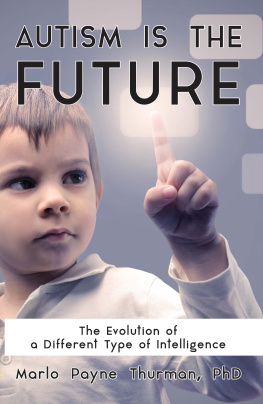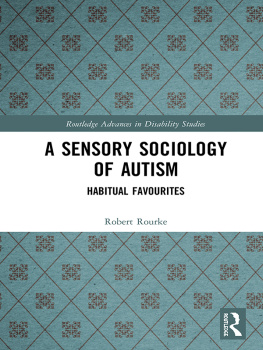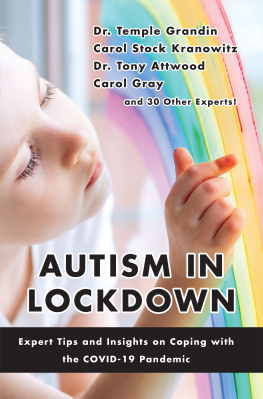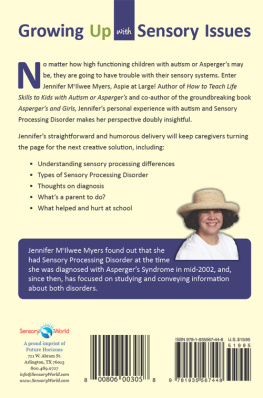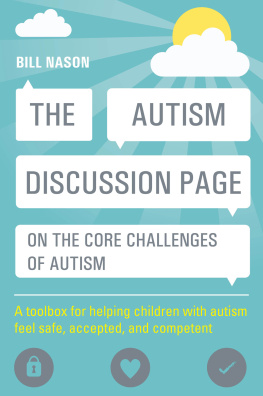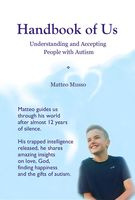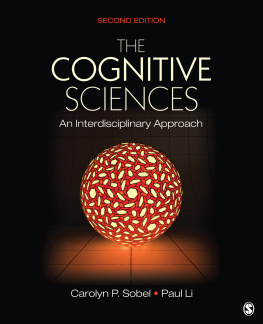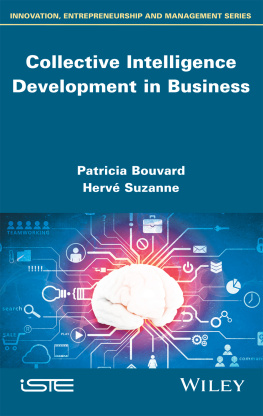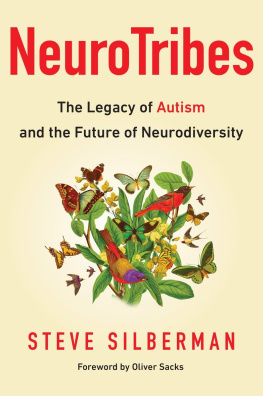AUTISM IS THE FUTURE:
The Evolution of a Different Type of Intelligence
All marketing and publishing rights guaranteed to and reserved by:
721 W. Abram Street
Arlington, TX 76013
(800) 489-0727
(817) 277-0727
(817) 277-2270 (fax)
E-mail:
www.fhautism.com
2019 Marlo Payne Thurman
All rights reserved.
Printed in USA.
No part of this product may be reproduced in any manner whatsoever without written permission of Future Horizons, Inc., except in the case of brief quotations embodied in reviews or unless noted within the book.
ISBN: 9781935567172
eBook Designed by Acepub
ABOUT THE AUTHOR
Marlo Payne Thurman, PhD
Marlo began work with children diagnosed with ASD in 1986. With group home management and intensive ABA therapy in her early career, she developed a special interest in meeting the unique needs of those individuals who were asynchronously developed into the realms of the ASD savant. Through her private practice, Ms. Thurman followed her passion and began specializing in assessment, advocacy, cognitive training, sensory and behavior support, and socio-emotional coaching. In 1999 Marlo founded the Brideun Learning Communities and built the Brideun School for Exceptional Children, a play-based, therapeutic school exclusively serving children grades one through eight who were identified as twice-exceptional. A quarter of the students served in Marlos school were on the autism spectrum. After closing the school, Marlo founded 2E Consulting Services to provide training and support to individuals and programs working with twice exceptional students and learners with autism. With advanced degrees in both school psychology and special education, Marlo holds board positions with 2E Newsletter and the US Autism and Aspergers Association. She regularly speaks at conferences and trains teachers and mental health practitioners, where several of her talks have resulted in keynote presentations. In addition to her public speaking and private practice work, Ms. Thurman is an adjunct faculty member at the University of Northern Colorado where she teaches preservice educators and in the graduate schools Autism Certification program. Marlo has been recognized for her work by People magazine, The Special Educator, ADDitude Magazine, The New York Times, and National Public Radio as well as numerous local venues. Most recently, Marlo completed a landmark study proposing an alternative sensory-cognitive difference theory based on her extensive discussions and interactions with diagnosed adults. This research was the foundation for this book. Marlo lives in Johnstown, Colorado. In addition to several quirky close friends and family members, Ms. Thurman credits her two adult children for teaching her about the value and beauty of being different-minded.
Dedication
In gratitude, I dedicate this work to all of the individuals, diagnosed or not, who have shared with me a different way to see, experience, and understand the world. I also thank the countless parents, teachers, therapists, and friends of those with an autism spectrum disorder who, like me, have learned to never give up on those on the spectrum of autismbecause finding brilliance, in some form or other, is just around the corner.
I would like to thank all the clients and research participants who made this work possible. I hope I honored your words. Mark Jarrett Carroll, thank you for hours upon hours of reading, editing, and discussing this book. Richard Baxter, I truly appreciate you for nudging Future Horizons to read my work. Jennifer Grace, without you, I would not have been able to put all these ideas together. Last, to all the amazing people at Future Horizons, thanks for your patience in seeing this through.
INTRODUCTION
Neurodiversity may be every bit as crucial for the human race as biodiversity is for life in general. Who can say what form of wiring will prove best at any given moment? Cybernetics and computer culture, for example, may favor a somewhat autistic cast of mind. (Harvey Blume, September 1, 1998, Atlantic Magazine )
M y understanding of neurodiversity began in a large warehouse store where I was crushed by a stack of eighteen twelve-foot-long conference tables and sustained a traumatic brain injury. It was a gusty day in May and, according to court records, the wind caught the edge of a pallet stacked on its end and the contents fell accordion style, battering my brain and damaging my sensory-motor cortex.
After the accident, my mother told me it was like I died and another person inhabited my body; for a long time, I was that different. After the initial fog of my injury faded (which took about five months) I felt, at the age of thirty, that I had lost most of the qualities I used to define myselffavorite colors, foods, clothing preferences, personality, all these had changed. Furthermore, my sensory system was so different, confused, and over-stimulated that I could not function. I no longer accurately read social cues and body language, frequently drawing criticism for sharing inappropriate details or telling inappropriate jokes. I spoke out of turn and at the wrong time or in the wrong place. My organization and executive functioning skills fell apart as I lost my rote verbal memory and sequencing abilities. I also stopped being able to read books, spell basic words, do simple arithmetic in my head, and I couldnt drive a car without becoming lost or disoriented. Within the year, I also started having seizures.
As bad as the injury was, during the weeks and months that followed I began dreaming in three-dimensional pictures. This happened for the first time a week to the day after my accident. It was as if I could see visual-spatial systems that were in perpetual motion. Prior to my injury, I was trained and had been working as a private practice school psychologist with emphasis in neuropsychological assessment. With my formal training and an ability to internally sense the changes that were happening in my own brain, I also began to see certain things more clearly.
I could more fully understand the inner workings and relationships of my own cognition, and because I was still limping along in my practice where I specialized in working with quirky, gifted, and twice-exceptional students, I started watching and learning from my clients. In time, this allowed me to transfer and test new theories and insights in my work. As I did this, I realized that my brain had never worked this way before; although for those I worked with and now more fully understood, theirs did. However, they lacked the language skills that I retained to explain it. Before my injury, my strengths were in language and verbal sequencing, and although I saw pictures in my mind, these were almost always flat and unmoving. Years later, I still cant put most of my 3-D pictures into words, but I finally have come to understand how these images affected and forever changed my overall thinking and innate cognitive processing.
It has now been two decades since my accident and although I never returned to my old self, I get by as long as I stay rested. I have even learned to function fairly well. Some skills came back, while others never did. I still have extremely poor rote memory. I was able to keep working and, through the years, completed psycho-educational evaluations for approximately 3,500 kids. I also reviewed records for another 1,000-1,500 clients. In doing so, I believe I have been able to pull a lot of pieces together about cognition and diversity in learning that I have never seen written anywhere else. I have also been able to detail some of the complex relationships between language and visual information processing and describe the ways that sensory processing, intellectual performance, and differences in cognition all interact with one another.
Next page

